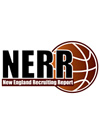Where did you play this summer?

The summer is over and with it the end of the recruiting period.
As has been well-documented, this recruiting calendar was totally unprecedented.
In 2018, the “live period” included a total of 21 days between the spring and summer where college coaches could watch perspective student athletes compete with their grassroots teams.
In 2019, the NCAA offered a total of 7 days – one weekend in April beginning on Friday night and four full days in July.
That variance was addressed with the creation of two weekends of new scholastic events in June as well as a pair of three-day NCAA Academies in late July.
(The fact that college coaches were permitted to attend the NBPA Top 100 Camp and USA Basketball training camps was completely irrelevant for 99.9% of perspective student athletes in the country since they are only for the elite of the elite.)
The problem with both the scholastic events and the NCAA Academies though is that not every student athlete had an equal opportunity to participate. Of the seven scholastic associations in New England, only the NEPSAC chose to run their own June event, meaning only kids in prep school had the opportunity to play in June.
The NCAA Academies had two hurdles. The first was an application date that was not well-publicized and the second was a selection process that wasn’t transparent.
In New England, even the student-athlete who had access to both the NEPSAC events and Academies had a total of 14 days in front of college coaches this spring and summer (3 April AAU, 4 June scholastic, 4 July AAU, 3 July Academies), a full 7 days less than they had last year. Student-athletes in the public schools had 10 days and just 7 if they weren’t chosen for the Academies.
The undeniable fact is that there were far less opportunities for college exposure this year than there have been in the past. While that’s unfair and just wrong on mainly levels, it made it that much more important for student athletes looking for exposure to be in the right places.
So, where did you play this summer?
Student-athletes who saw a surge in their recruitment this spring and summer experienced that not just because they showed well but because they showed well in an environment where college coaches saw them do so.
Like all live periods, there were a plethora of events out there to chose from, but the reality is that some teams made poor choices and opted to play in settings that didn’t draw college coaches. In other words, they chose settings that didn’t have enough collective talent to attract college coaches.
Playing in the right place has never been more important than it was this year, and not just this summer.
It’s not just student-athletes who were at a disadvantage this year, it was college coaches too. Recruiting is the lifeblood of any college program and coaches didn’t have a sufficient opportunity to properly evaluate this year.
While student-athletes and their families have to adjust to this new calendar by making sure they’re in the right places, college coaches have to do more legwork and research than every before.
“Trust your own eyes” doesn’t work when your eyes aren’t allowed to see the prospects compete.
So they watched more film and invested in more recruiting services than ever before to prepare for those 14 days.
Which again begs the question, where did you play?
Where you seen by recruiting services that college coaches rely on and recorded by outlets that are convenient for college coaches to access?
The perspective student-athlete who didn’t, put themselves in a position where they were an unknown to coaches coming into the live periods, and in this year in particular, very unlikely to be noticed.
Because yes, the NCAA created far more roadblocks for student-athletes to get exposure to college coaches this year, but those obstacles weren’t insurmountable. The student-athletes who found a team that highlighted their strengths, put them in places to be seen by the right people outside the live period, and then did the research to maximize exposure opportunities during the live period did just fine this summer. That will be something to remember next week when we release our stock-risers in 2020 and 2021.
Those who didn’t, need to recognize their errors so they can navigate the process better next year, if they have that opportunity.

